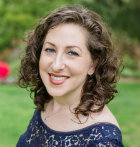Renew Your Classroom Community in January
 By Stacey Shubitz
By Stacey Shubitz
Winter break is drawing near, which means you are probably anticipating some well-deserved time off. While you may be thinking about the family you’ll see, the day trips you’ll take, and the books you’ll read, you may also be thinking about those first days back to school in January when students will need some time to readjust to the ebb and flow of school.
The Social-Emotional Environment
I’ve never taught or worked with a class who picked up right where they left off in December. For some students, winter recess doesn’t mean a fun trip to a warm climate. Instead, a week-long break from the routines of the school year can include navigating unstable family relationships, food insecurity, and disappointments from the holidays.
Not all students return refreshed from the break. There are some things you can do to nurture the students who need support the most while reconvening your classroom community.
Re-establish rules: Take a look at the rules you co-created with students in the fall. Revisit them through discussion. Tweak the rules, if the community sees fit, so rules will be in service of helping the entire learning community reach their learning goals for the remainder of the school year.
Review routines and procedures: After three years in the classroom, I came to realize I would need to take time after a significant break to review basic things – like moving to and from the meeting area, using materials, and asking for help when stuck – before problems arose.
I found it was better to review things during the first couple of days back to school in January. Through review, I could refresh my students’ memories, keep them safe, and remind them they were cared for rather than turning to punishment if things went awry.

I believe this kind of low-stakes writing matters since it provides students with the opportunity to use writing as a means to heal or sort through problems on paper (or on a keyboard)… or just to recount moments they want to hold onto from their break.
Revive the safe space to share: Review expectations for asking questions and sharing a comment about a peer’s work prior to anyone sharing their work with peers or the class. In addition, it is useful to review the kinds of listening behaviors and speaking skills you wish to see when students communicate with each other.
Make time for fun: After all of the December celebrations, it’s hard to justify “fun” after school resumes in January. However, kids need something to look forward to as much as you do. Whether it’s infusing more playfulness into your minilessons or scheduling a Friday afternoon trivia or poetry circle, there are ways to sprinkle joy into the school day without feeling frivolous. Chat with your students about ways to infuse play into the learning experience so they have things to look forward to every week.
The Physical Environment
If you have time for a few whole-class conversations before you leave for winter recess, there are three things you could discuss with your students so you can get ahead of things in January.
Refresh displays: Before students leave for winter vacation, remove unused anchor charts from the walls or easel. If you have student work hanging on a work-in-progress bulletin board, send it home with students or file it. Returning to blank bulletin boards, which you and your students will fill up with anchor charts and work samples, will help set the stage for a fresh start when they return in January.
Discuss the room arrangement: Gather your students to determine how things like seating arrangements and the flow of the room are working for them. If there’s a consensus that something needs to change after vacation, put a plan in place to make those changes upon returning in January so everyone – not just you – is part of the rearrangement.
Make a plan to replenish materials: By now, pencils are chewed, pens have run dry, and more than a few markers have lost their caps. January is a great time to purge unusable supplies and, if necessary, bring out new ones from the supply closet. Make a plan to enlist every student’s help to restock table caddies (if you use communal supplies) and other learning areas when returning in January.
NOTE: If the week before your winter recess is filled with special events and celebrations, then all of these things can easily be pushed off until you return in January.
Refresh the learning in the New Year
It’s challenging to keep up with the rigor of today’s curriculum demands without nurturing your classroom community throughout the school year. Taking the time to refresh the physical space and renew the positive relationships you nurtured in the fall is time well-spent during the first week back to school in January.
In order to help students grow as learners, it’s necessary to reinvest time in January to renew your classroom community so your students can continue to grow academically during the second half of the school year.




































